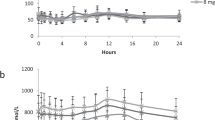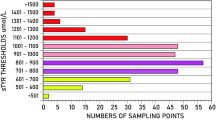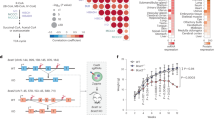Abstract
THIAMINE pyrophosphate (TPP), the active derivative of vitamin B1, functions as a coenzyme in dehydrogenase reactions such as the oxidative decarboxylation of α-ketoisovaleric (KIV), α-keto-β-methylvaleric (KMV) and α-ketoisocaproic (KIC) acids in humans1. Impairment of these reactions produces the group of disorders known as maple syrup urine disease2,3. In the classic form of the disease, the ketoacids and their amino acid precursors accumulate in homozygous affected individuals and depress the function of the central nervous system early in life. Therapy involves restriction of branched chain amino acids in the diet to decrease their concentrations in the body fluids4. Further reduction in plasma leucine, isoleucine and valine has been achieved by supplementing this diet with thiamine for patients with partial (60%) and severe (95%) reduction in enzyme activity5,6. Other investigators found no effect in patients lacking all enzyme activity7,8. We are seeking an explanation for the clinical response at the enzyme level and have already reported that branched chain α-ketoacid dehydrogenase activity was increased in peripheral white blood cells. This occurred after 3 weeks of oral thiamine treatment in patients with 5% activity and in normal controls5. In contrast, activity in mitochondrial inner membranes from cultured normal and mutant skin fibroblasts was not stimulated directly by TPP/Mg2+, but was prolonged by the presence of TPP/Mg2+, suggesting that the cofactor increases the half life of the dehydrogenase complex. We have now found that thiamine supplementation of normal diets increases normal human liver branched chain α-ketoacid dehydrogenase activity.
This is a preview of subscription content, access via your institution
Access options
Subscribe to this journal
Receive 51 print issues and online access
$199.00 per year
only $3.90 per issue
Buy this article
- Purchase on Springer Link
- Instant access to full article PDF
Prices may be subject to local taxes which are calculated during checkout
Similar content being viewed by others
References
Elsas, L. J., Priest, J. H., Wheeler, F. B., Banner, D. J., and Pask, B. A., Metabolism, 23, 569–579 (1974).
Dancis, J., Levitz, M., Miller, J., and Westall, R. G., Br. Med. J., 1, 91–93 (1959).
Menkes, J. H., Hurst, P. L., and Craig, J. M., Pediatrics, 14, 462–466 (1954).
Dent, C. E., and Westall, R. G., Archs Dis. Childh., 36, 259–268 (1961).
Elsas, L. J., and Danner, D. J., in US-Japan Conference on Thiamine (edit. by Gubler, C., and Fujiwara, M.), (Wiley Interscience, New York, in the press).
Scriver, C. R., Mackenzie, S., Clow, C. L., and Delvin, E., Lancet, i, 310–312 (1971).
Wong, P. W. K., Justice, P., Smith, G. F., and Hsia, D. Y. Y., Clin. Genet., 3, 27–33 (1972).
Elsas, L. J., Pask, B. A., Wheeler, F. B., Perl, D. P., and Trusler, S., Metabolism, 21, 929–944 (1972).
Mudd, S. H., Edwards, W. A., Loeb, P. M., Brown, M. S., and Laster, L., J. Clin. Invest., 49, 1762–1773 (1970).
Author information
Authors and Affiliations
Rights and permissions
About this article
Cite this article
DANNER, D., DAVIDSON, E. & ELSAS., L. Thiamine increases the specific activity of human liver branched chain α-ketoacid dehydrogenase. Nature 254, 529–530 (1975). https://doi.org/10.1038/254529a0
Received:
Revised:
Published:
Issue Date:
DOI: https://doi.org/10.1038/254529a0
This article is cited by
-
Enhanced branched-chain amino acid metabolism improves age-related reproduction in C. elegans
Nature Metabolism (2024)
-
Production and characterization of murine models of classic and intermediate maple syrup urine disease
BMC Medical Genetics (2006)
-
Maple syrup urine disease 1954 to 1993
Journal of Inherited Metabolic Disease (1994)
-
Branched-chain ketoacid dehydrogenase activity and growth of normal and mutant human fibroblasts: The effect of branched-chain amino acid concentration in culture medium
Biochemical Genetics (1983)
Comments
By submitting a comment you agree to abide by our Terms and Community Guidelines. If you find something abusive or that does not comply with our terms or guidelines please flag it as inappropriate.



